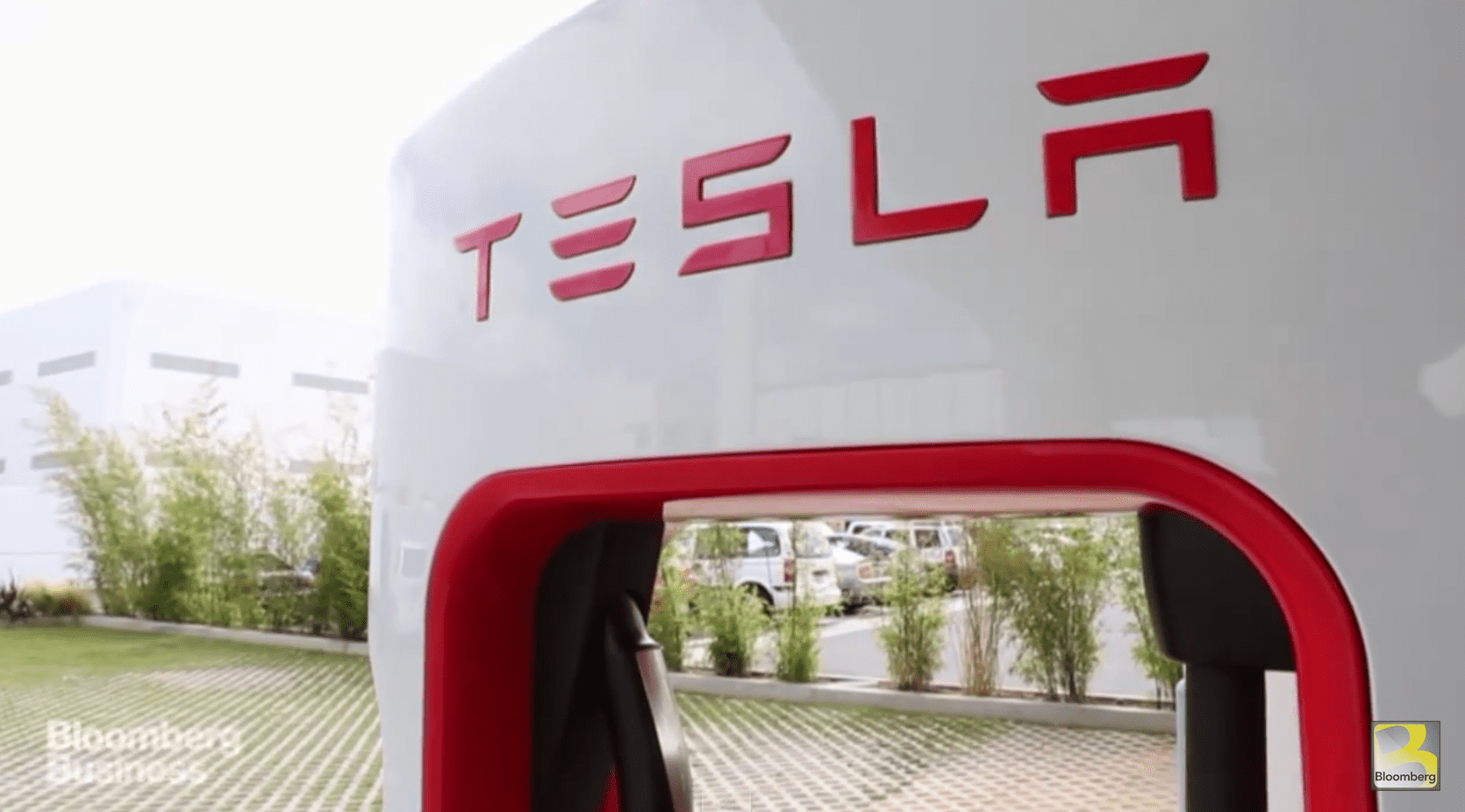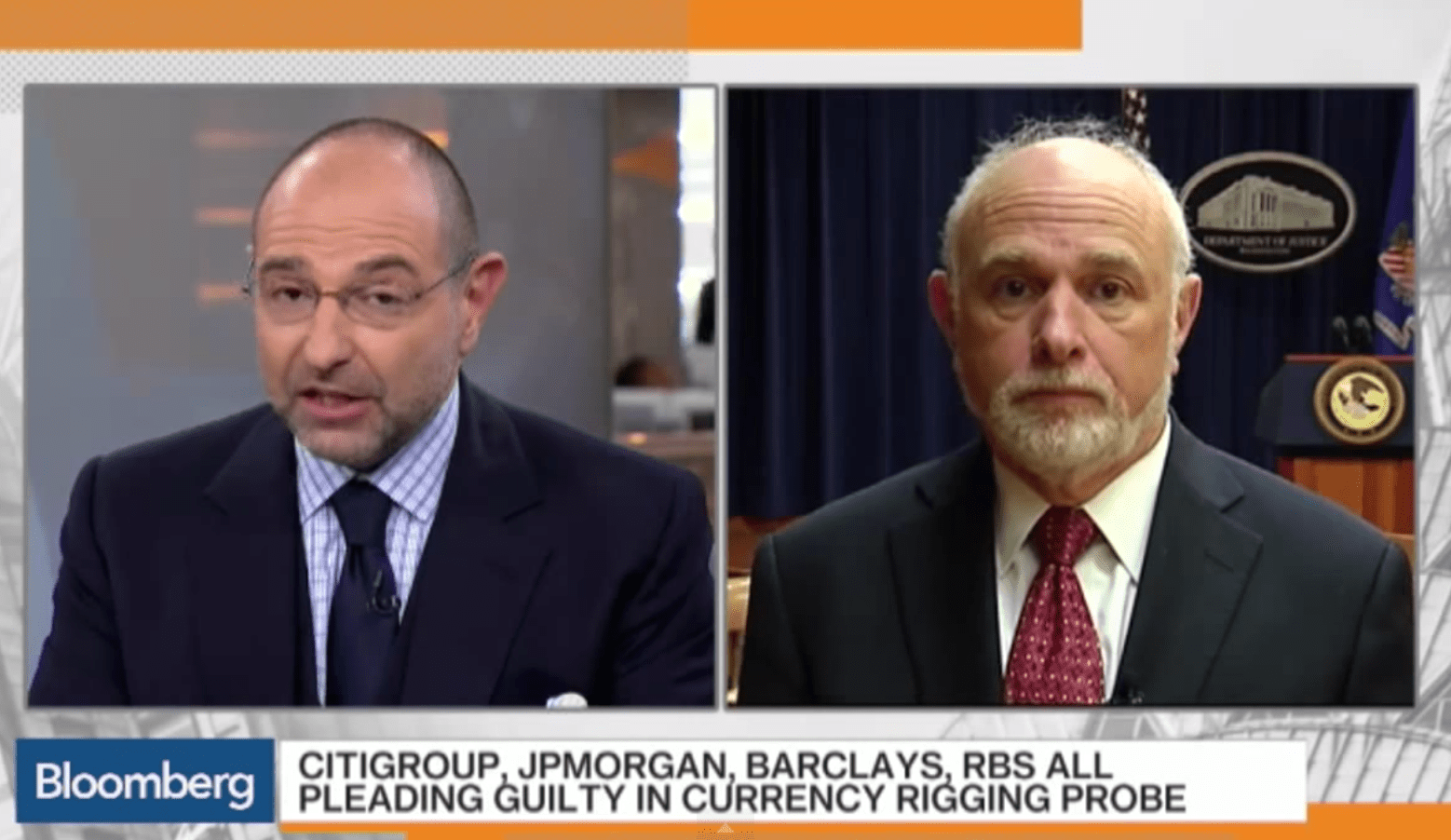How can we possibly compete with robots when it comes to trading?
We can’t – especially when new technologies are only making it easier for “them” to trade, and harder for “us” to invest.
In 2013, I wrote a letter titled, “The Shocking Truths about High-Frequency Trading.”
In that letter, I tried my best to explain — as simply as I could — not only how high-frequency trading (HFT) works, but how they make money.
In short, high-frequency traders use very sophisticated and extremely complex algorithms to buy and sell stocks at extreme speeds.
Via The Shocking Truths about High-Frequency Trading:
“…Algo-traders make trades in 10 milliseconds or less. Some say it’s as fast as half a millionth of a second – that’s more than a million times faster than the human brain can process a decision.”
It takes between 300 to 400 milliseconds for you to blink your eye.
Now here’s the scary part: I wrote that two years ago.
Today, high-frequency trading is even faster.
According to Aequitas Innovations, the parent company of Canada’s newest stock exchange dedicated to leveling the playing field for investors, 11% of all 2014 observable orders in the Canadian marketplace lasted less than one millisecond.
In other words, by the time you blink your eye and before you even place a trade, a high-frequency trader may have already processed 400 orders ahead of you.
Good luck trying to compete with that.
So we know high-frequency traders trade fast, but how do they make money? I also explained this in my Letter:
“By selling stocks practically as soon as they buy them, the high-frequency traders can manipulate small price differences in the stock market; faster trades equal more money. That is why the algorithms and the technology used in HFT are always being upgraded to work faster.
In HFT, it doesn’t matter how much money is moving in each direction per trade, it’s the amount of trades the program can make in a split second that’s important.
Think of it this way:
If I can make 10,000 trades every second and arbitrage $0.0001 cents per trade, that equals to $1 every second, $60 every minute, and $3,600 in just one hour.
What may seem like worthless fractions of a dollar, soon becomes much more.”
Last year, Virtu Financial, a high-frequency trading firm, earned $732 million trading spread across more than 11,000 assets and at least 225 exchanges. At times, the Company would process as much as 5 million trades per day.
Via IBTimes:
“Most Wall Street traders would be happy to go a week without a losing day. For Virtu Financial, the high-frequency trading firm that has its initial public offering Thursday, unprofitable days come once in a blue moon.
In fact, the firm boasts of ending just one day in the red in five and a half years – and that was the result of “human error.”
With this kind of built-in profits, its no wonder bets on the world of high-frequency trading continue to grow.
Goldman Sachs just made a $20.5 million investment in the high-frequency trading technology company Perseus, while Virtu Financial just completed its IPO last month, raising a whopping $314 million.
In the U.S., HFT represents more than 50% of all trading volume. But it’s not just happening here in North America.
CLICK HERE to Share Your Comments on High-Frequency Trading
High-Frequency Trading Taking Over the World
In South Korea, nearly 40% of all trading volume comes from high-frequency trading.
Via Yon Hap News:
“High-speed stock trading has been on the rise on South Korea’s main bourse this year thanks to the market’s bullish run, accounting for nearly 40 percent of all trading volume, data showed Sunday.
High-frequency trading came to 11.34 billion shares between Jan. 4 and Thursday, or 37.1 percent of the trading volume recorded in the cited period, according to the data by the Korea Exchange (KRX).”
In December 2014, the European Securities and Markets Authority (ESMA) published a report looking into the extent of high-frequency trading activity in the European Union’s equity markets. It was the first study into HFT across major venues in the EU, and they found that 24% to 43% of all equity value traded were the result of HFT.
It’s clear that high-frequency trading is happening in stocks all over the world. But what you may not know is that they are now trading more than just stocks.
In Australia, algo-traders have begun to work itself into its $42 trillion interest rate futures market.
“Secretive “flash boy” operators are using high-frequency and algorithmic trading technology to “jump the queue” in Australia’s $42 trillion interest rate futures market, squeezing out local traders who can’t keep up with their computing speed and power.
Market sources said about five or six internationally funded firms have used the sophisticated technology to get ahead of local traders, in the process making millions of dollars of profits every quarter when actively traded bond futures contracts expire.”
Could it be that the value of our money and borrowing capacity will soon be influenced by robots?
It may already be for Australians.
Continued via Sydney Morning Herald:
“…Some say the (high-frequency) trading may explain the big movements in both the bond and currency markets in the seconds before the latest Reserve Bank of Australia interest rate decision in March that raised suspicions of insider trading.
Bell Potter’s John Craig, a veteran in the Australian fixed income market, said some firms were using technology to gain favourable queue positions and, therefore, an advantage.
… With a notional turnover of $42 trillion, Australia’s bond futures market is the fifth-largest interest rate futures market in the world and is often referred to as the “tail that wags the dog” because trading volumes are around six times larger than the physical government bond market. Notional turnover refers to the total exposure of contracts rather than the physical dollars that are traded. Around $6.5 trillion of contracts trade annually, compared to $1 trillion of government bonds.
The depth of the futures market means it has a large influence on the borrowing rate of the nation.
…Interest rate futures are also a key revenue driver for the ASX, accounting for the majority of volume in derivatives business that accounts for around $200 million, a third of the exchange’s total revenue.
At present, algorithmic trading accounts for 10 percent of activity on the ASX 24 platform. But traders in the market have warned of an alarming rise in high-frequency trading and algorithmic traders over the last 18 months, coupled with increased activity from giant US hedge funds that have sought to squeeze local traders as futures contract expiry dates approach.”
In other words, high-frequency trading is beginning to affect not just equities, but also interest rates and currencies. That’s a scary thought.
Misconceptions
So what? What if high-frequency traders process millions of trades? Doesn’t that provide more liquidity?
When most people talk about high-frequency trading, they often think it’s about making trades as fast as possible. And they’re right.
But what most people don’t realize is that the speed advantage isn’t just in the trades itself, but also in the speed in which these programs receive information.
Speed of Information
For centuries, business people have been in an information arms race because getting information faster means an extreme competitive advantage.
In the 19th century, thanks to his extensive network of carrier pigeons, Nathan Rothschild was able to receive news of Napolean’s defeat at Waterloo before anyone else in London. While traders braced for a British loss, he went long and made a fortune with that one piece of information.
So how does that relate to high-frequency trading?
The Transmission of Information Between Financial Corridors
When someone puts up an order to buy or sell stock, a trading desk processes that order and sends it out to different marketplaces to fulfill that order.
These orders are information that has to travel from one point to another.
Because marketplaces vary in physical distance from one to another, certain marketplaces may be able to see the orders coming in just milliseconds faster.
Now let’s say someone is selling a stock for a penny less on the Chicago market. Buying that stock on the Chicago market, and then immediately selling it in New York, could turn a quick profit for whoever does it first.
Since high-frequency trades can be made in less than one millisecond, if you could see that order before anyone else, you would be able to make a trade knowing that you could buy for a penny less and sell for a penny more before anyone else could react – essentially guaranteeing profits.
In other words, shaving milliseconds off the time it takes to transmit information between financial corridors could result in millions in profits.
One of the most important financial routes is the one from Chicago to New York, which is why I used it as an example. That’s why hundreds of millions of dollars have been invested in recent years to reduce the time it takes for information to move back and forth between the two financial hubs.
The Battle for Speed
For over 150 years, buy and sell orders were transmitted over copper cable, which zigzagged its way along rail lines. It took 0.25 seconds for a message to complete this 2000 mile round trip from New York to Chicago.
When fiber optic cable finally came along in the 1980’s, messages could be carried by light instead of electricity, which, of course, was much faster. Today, much of our information travels in beams of light through fiber optic cables.
Through these beams of light, that same Chicago to New York round-trip path takes only 14.5 milliseconds. That’s an extreme speed advantage over copper cables.
But what if we were to make that path even shorter and get rid of all of the zigs and the zags?
The straightest possible path between New York to Chicago is 720 miles. Of course, this isn’t possible because, in order to do that, you would have to go through other people’s properties, and a lake. But nearly five years ago, a company by the name of Spread Networks LLC, spent an estimated $300 million and was able to knock off 175 miles from the New York to Chicago trip; thus, bringing the total round trip time from 14.5 milliseconds down to 13.1 milliseconds.
Imagine spending $300 million just to shave off 1.4 milliseconds.
It’s clear that every millisecond counts, so it’s no surprise that companies began to look for ways to send information even faster. But what could be faster than the speed of light through fiber optic cables?
Well, it turns out that the speed of light in glass – fiber optics – is much slower than the speed of light through the air.
Light, an electromagnetic wave, can travel at 300,000 kilometers per second in a vacuum, and nearly that quickly through the air. Light, however, can only travel at about 200,000 kilometers per second in even the clearest glass.
To simplify, it takes light 1.5 nanoseconds (0.0000015 milliseconds) to travel a foot of fiber optic, but only one nanosecond to travel a foot in the air.
With that knowledge, companies began investing millions into microwave transmitters, setting up chains of microwave dishes between financial-market data centers. These microwave transmitters meant that a round-trip from New York to Chicago could now be cut down to 8.5 milliseconds.
But even that was not enough.
Several companies have now begun to use millimeter waves, which offer a shorter wavelength and can carry even more information than standard microwave transmissions. It would seem that the fiber optic network that cost $300 million nearly five years ago may no longer be relevant in high-frequency trading.
Today, companies are still trying to shave off every millisecond possible between the two major financial hubs. Based on the speed of light, the theoretical limit for sending information between New York and Chicago is 7.96 milliseconds. Let’s see who gets there first.
An Unfair Advantage
Speed is a major advantage when it comes to trading; it’s almost like having access to insider information about every stock that is being traded.
High-frequency traders (HFT) can only profit if real investors – human investors – are buying and selling stock because they are essentially arbitraging our trades.
What these HFTs also do is compete with one another. They’ll put up buy or sell orders to fool the market, and then pull those orders before they are filled. One could call it legal market manipulation, since:
“Manipulation is intentional conduct designed to deceive investors by controlling or artificially affecting the market for a security. Manipulation can involve a number of techniques to affect the supply of, or demand for, a stock. They include: spreading false or misleading information about a company; improperly limiting the number of publicly-available shares; or rigging quotes, prices or trades to create a false or deceptive picture of the demand for a security. Those who engage in manipulation are subject to various civil and criminal sanctions.” – U.S. Securities and Exchange Commission
If a human investor did the same thing, he would be violating securities regulations and would be subject to various civil and criminal sanctions.
What do you think of HFT strategies and their advantages over the retail investor? Do you think it’s fair? Should they be allowed to do what they do?
CLICK HERE to Share Your Thoughts
We’ve already witnessed many flash crashes that were likely the result of high-frequency trading.
These high-frequency traders also can’t predict risk, operational management, the value of management, changes in technology, and political outcomes. Robots don’t, and can’t, understand value or growth. All they see are numbers. In other words, the value of our markets could soon, or may already, be represented by unrealistic valuations generated by robots.
The dangers and violations of high-frequency trading are apparent, but we won’t likely see their use go away anytime soon – there’s simply too much money to be made.
The Death of High-Frequency Trading?
It may be far-fetched to think that predatory high-frequency trading will go away, but there is one very innovative company in Canada that recently launched a new marketplace that tackles the very issues concerning high-frequency trading and fairness in the marketplace.
Two years ago, I wrote about this Company in my Letter, “Aequitas Innovations and the Mother of All Bubbles.”Today, the Company is ready to enter the market and has already begun to facilitate trades. Soon, it will begin to list issuers.
Aequitas Innovations is spearheaded by Jos Schmitt, the former CEO of the Alpha Group, which created the first real alternative trading system in Canada.
The vision of Aequitas is to provide a stock market Canadians can believe in; a cost-effective marketplace, which protects the interest of all investors, issuers, and dealers, and reflects the fundamental purpose of an exchange: the efficient allocation of capital between issuer and investor as a central force driving the Canadian economy.
Their path to achieving that vision is three-fold:
1. Provide a fair marketplace by leveraging technologies to curb the advantage HFT’s have.
2. Bring more liquidity back to the marketplace by both curbing predatory HFT strategies and by re-invigorating true market makers with the tools they need to successfully trade the spread.
3. Addressing transparency of order flow and trading information by offering information to all market-participants, and even offering the retail investor free market data.
It’s easy to understand points 2 and 3, but how will Aequitas combat predatory HFT strategies?
Unlike some of the solutions proposed by the TMX in my previous newsletter, Aequitas’ Exchange leverages proprietary and patented technologies and creates a “speed bump” when executing orders.
When a trade is placed through a trading desk and sent through Aequitas, Aequitas’ leveraged technologies will determine the time it takes for that trade to reach certain marketplaces and put in very specific delays, so that all orders are received at the same time.
In a previous interview, Jos talked about the predatory strategy of the HFTs and explained how his exchange would tackle that issue:
“…You think there is a lot of liquidity in the market: you send in an order, you touch the liquidity on one marketplace and it disappears on all other ones where you did see it.
Not only does it disappear, but also you suddenly have a series of new orders in the market with the same intent as you (often ahead of you due to the speed advantage we talked about previously).
To fill your order to its full extent, you now need to trade at a worse price or sit in the book with other parties that are ahead of you in the priority queues.
We will tackle this with an order routing technology that will ensure that your order hits all marketplaces showing liquidity at the same time. Your fill rate will increase, and other market participants will be held accountable to the liquidity they display.”
Two years ago, I was very skeptical of another Canadian exchange that could cause more transparency and complexity issues for investors.
But after sitting down with Jos again last week, I believe Aequitas has come up with real and tangible solutions to many of the problems facing the Canadian market. If Aequitas can become successful and gain a bigger market share, it may just help bring trust and confidence back into the Canadian markets.
What do you think of Aequitas? Will they help solve some of the problems we face?
CLICK HERE to Share Your Thoughts
Time for Change
It is very important that we all take responsibility for what has happened to our market.
I have heard many complaints from industry professionals; everything from rules and regulations, to lack of interest. While some of these complaints may be warranted, many of the problems we face are our fault.
Over the past thirty years, our small cap system hasn’t changed: raise money, promote stock, raise more money.
Throughout this process, we lost what the essence of the capital market is: a place where investors invest in companies to help them grow. Owning shares of a company used to mean you owned part of that company; today, it simply means you own a piece of paper.
This lack of pride in ownership is the fault of both the public companies and the investors.
The majority of public companies no longer treat shareholders as owners.
To give you an example, I asked an investor relations professional, who represented many public companies, “Wouldn’t it be great if more shareholders contacted you?” His response was, “I only want to speak with those who own millions of shares. I don’t have the time or the patience to speak with an investor who only owns a few hundred dollars. It’s a waste of my time.”
To me that is a big problem. Many in our industry have been too spoiled by easy money during the boom cycles and have taken investors for granted. I don’t care if a shareholder owns a thousand or a million shares; they are both investors, and both should be respected.
Of course, that’s not to say investors aren’t part of the problem either.
Nowadays, investors no longer take pride in ownership of the stocks they own. They often view their investments as mere trades.
As I mentioned in my Letter, “The Shocking Truths About High-Frequency Trading“:
“Investors are growing more impatient every day, turning the stock market into a casino, rather than a platform to help companies grow.
According to Business Insider, investors now hold stocks on average for only five days; compare that with eight years in the 1960s.
If business performance dictates how a stock should react, then companies are now only given five days to succeed. After all, that’s the average time investors are holding stocks now.”
Its obvious there’s a problem in the Canadian marketplace. I believe it all stems from poor communication and misinformed shareholders. How many shareholders of a company actually speak with the Company? I would bet that less than one percent of shareholders actually communicate with the companies they invest in.
When was the last time you spoke with a public company? Have you ever contacted a public company before investing?
CLICK HERE to Share Your Thoughts
Which brings me to another reason why I am becoming a big supporter of Aequitas’ vision: as part of their on-going listing requirement, a company has to have the commitment of at least one Qualified Analyst to cover the security for a period of at least one year and to issue one or more research reports, or have an investor relations budget of at least $50,000 per year.
I asked Jos about the requirement, and their belief is if you can’t communicate with shareholders and keep them informed, you shouldn’t be public.I agree 100%.
Many of you may have noticed that over the past months, I have skipped a few weekly newsletters. That’s because I’ve been working extremely hard on bridging the communication gap between investors and public companies.
My hope is that investors will once again be “investors” and take pride in the stocks they invest in. This can only be accomplished if we all change our attitudes, and if public companies focus more attention on their shareholders – shareholders are, after all, the most important people in a public company.
If we continue down our current path, Canada will lose.We need change.
The Equedia Letter













If this is allowed to continue, it is clearly the end of retail trading and a retail market. In Canada, we have lost our junior mining market to HVT simply because knowledgeable traders in the smaller brokerages cannot compete with the computer trades. Moreover, there are rebates paid to HVT traders regardless of the intrinsic value of the stock, the Company, the management, analyst reports, valuations or forecasts. Moreover, the trades must be flat at the end of a trading day. So for an algorithm to clip a penny, most days the stock finished down in order for the HVT to make money. It adds down.
Most will say “so what”. Who cares about junior exploration Companies or for that matter any start up small cap Company. Most do not realise that mines are a wasting asset, and metal discoveries are made by small Companies run by geologists who know what to explore for and can turn on a dime as markets open and close.
Discoveries are not made by multinational mining Companies. They buy other people’s discoveries. This death of retail, can only lead to insufficient metal in the pipeline, metal price inflation and inflation generally. Competition among 100s of junior Companies has always beaten inflation. That equilibrium is about to change and you will not hear the senior multinationals complain for a second about the lack of discoveries in the pipeline.
There needs to be a correction made immediately to put a market cap cut off grade to disallow HVT trading from trading small cap Companies. It would allow share price appreciation to a level profitable for retail investors and protect them from aggressive trades based only on liquidity. At the same time a market cap cutoff value would discourage small Companies from pushing out too much stock which wouls also encourage retail interest.
All you article does is confirm that if you intend to make money in the stock market through quick trades there is always going to be someone who is cheating the system, either with insider information or a technical breakthrough that no one has anticipated. However if you buy every stock as if you were buying the whole company and intending to live off the dividends then what happens in day-to-day trading is mostly irrelevant.
You invest in a significant number of well run, established, profitable, under valued companies that you intend to hold on to for your life time. You will slowly become moderately rich and sleep well at night knowing that the chances for a catastrophic loss over your entire portfolio is just about nil. If your treat the stock market like a slot machine or a roulette wheel you have to accept that there will always be someone tampering with the machinery to increase their chances of winning. The temptation has to much appeal to the greedy 20% who think the 80% are suckers waiting to be fleeced.
Retail is dead and HVT killed it, Ian. Your description of a retail investor as a gambler is simply ignorant. I have done more in depth analysis of junior exploration companies than you ever will as a lawyer, and as a geologist have deep knowledge of the business over 45 years inside it from every angle. I can tell the difference between real management and a promotion. I want to choose for myself. I am one of three analysts on the street who would not recommend Bre-X.
With the market swarmed by HVT, individuals are not able to choose. I am not interested in mutual funds. I am not an ant in the anthill letting you choose for me.
That’s what big banks who control the regulators want. They want to control your money so they don’t let you make your own decisions.
Here in the Excited States, long term holders pay tax on capital gains of 20% at the top end if held for 366 days – and 39.6% if held for 364 days (short term is anything less than a year). So lets say the POSITIVE reward for HOLDING LONGER is roughly a 20% tax saving at significant risk.
Logic would suggest that there be a NEGATIVE reward for HOLDING only a microsecond or less, attracting a tax penalty for trades that carry much less, usually zero risk. What big trader (?Goldman, was it?) had NO LOSING TRADES last year?
How about
39.6% for ‘short term’ trades down to 48 hours,
60% for ‘very short term’ trades down to one hour,
95% for ‘really short term’ trades down to one minute, and
99% for ‘ultra-short term’ trades down to 500 milliseconds.
Any trade faster than that would be a ‘too-short term’ trade, taxed at 110%.
There, all fixed.
Sorry, Aequitas. But it was a good try.
Our super-cooperative government down here will be on this like a check from a Koch. Not.
You say all we have when we invest in a company is a piece of paper……what paper? Bix Wier has reported on the entity that is supposed to keep track of the actual shares of stock at a building in Manhattan, NY but that much of the stock shares were ruined by the hurricane flood. With HFT it would be impossible to keep track of actual share certificates so all one really has is a computer record with a brokerage and how can we trust this is we have a massive power outage or disruption? Congressional oversight seems to be nonexistent.
You are right it is not worth investing in any markets anymore.We now have high frequency trading algorithms derivatives short selling what chance as the average investor got NONE.I think all these things were invented to make the rich richer and us poorer.This CASINO as got to be closed down.I am out of here.
This new exchange does sound to be promising, especially if it can make sure every one gets orders at the same time.
My only concern is that HFT still make trades faster than we ever could.
What is most disconcerting is that those who have ” high speed technology” can tip the playing field to their advantage.
The rest of us who rely on traditional methods of order entry are at a disadvantage.
Is this fair to all?
JS
Great post JKE. This is quite a comprehensive introduction to the world of East and South African blogs.A question: if we have a EUROsphere, does that mean that we also have an ? And if so, does it have an afro?
AKAIK you’ve got the answer in one!
Nice! Very good article.
As a struggling investor I know that it is probably my own fault that my success rate is sub prime but maybe not as much as I thought?
High Speed trading should definitely be discontinued.
It is totally unfair to other traders. Everyone should
be on the same playing field! Thousands of one second trades
is ridiculous. Plus think of the hundreds of ways that the
market can be manipulated using high speed trading. It is
scary!! It is like standing on the edge of a waterfall. One
false manipulation and the whole market crashes! It must be
stopped!!
MANIPULATION: is at the very core of all market participants. You get to a point that you give up In trading as the manipulation ..is all over.. So much for the little guys… all orders should arrive and stay lamently listed for a minute to avoid speed-trading..
This is market manipulation in all senses.. It’s amazing how the government allows this. Are the regulators working for big money traders etc. or us, the taxpayer..This looks like it could be worse than 2008 except in a financial collapse nearly everyone could say goodbye to their hard earned pensions, perhaps even gov’t pensions.. Again legalized theft.. aSo crime does pay – Bigtime.. Absolutely government approved ANTICHRIST.
AFAICT you’ve covered all the bases with this answer!
I am new to stock trading (warning: I have never traded). I read this article and see LEE’s comment. That is exactly what I was thinking as a HFT killer *maybe*. I bet some HFT would still occur if someone used a buffer (assuming the profits are high enough to have “buffers”). IE: A HFT knowing that newly aquired stocks are going to be held for a minute decides to have some of that same stock available to sell while waiting to use the newly purchased stock. Eventually if profit is high enough to pay for the original purchase of the “buffer” it becomes profitable.
Instead of a 1 minute limit on the purchase make it a 1 minute limit on the stock holder… no trading of that stock for 1 minute (after buying or selling or trading it).
never mind that last comment… If a buffer works for a 1 minute ‘delay’ on a stock it would also work for a 1 minute ‘stock holder’ limit but would require 2 accounts.
sir,
Let us know that what is high frequency trading criteria i mean to say that how many lot are traded in in one second for HFT.
It is. What it is. Let the big fish eat the small one. They depend on it .and we the small ones runn!.
Trulife Distribution – Nutrition Distribution helps our clients achieve success in a complex, competitive retail environment. Our team of nutrition industry experts takes care of everything from importation compliance to marketing, sales and distribution at the ground level. There is no need to navigate the complicated intricacies of the American market when we have already done the work. Let us use our experience to expand your brand and put your product into the hands of American consumers. https://trulifedist.com/
Has anyone ever been to Mr. Vape Vape Shop located in 3225 N Prospect Rd?
Trulife Distribution – Nutrition Distribution helps our clients achieve success in a complex, competitive retail environment. Our team of nutrition industry experts takes care of everything from importation compliance to marketing, sales and distribution at the ground level. There is no need to navigate the complicated intricacies of the American market when we have already done the work. Let us use our experience to expand your brand and put your product into the hands of American consumers. https://trulifedist.com/